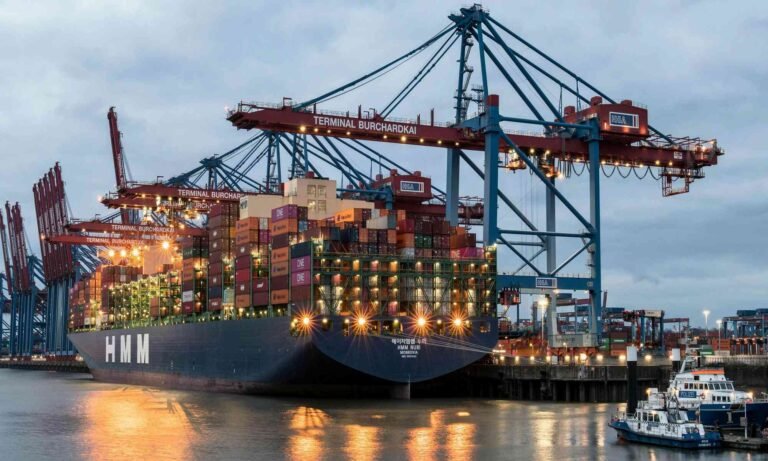Living comfortably requires more than just a roof over our heads; it necessitates having adequate supplies to support daily activities. The essentials can range from food and water to personal hygiene items and household utilities. Knowing what supplies you need can drastically improve your quality of life.
At the heart of adequate supplies are the basics required for sustenance. This includes sufficient food supplies, which should be varied to meet nutritional needs, and clean drinking water. It’s also important to maintain a well-stocked pantry with non-perishable items, as this contributes to meal preparation without frequent grocery store visits.
In addition to food and water, personal hygiene items must not be overlooked. Adequate toiletries like soap, toothpaste, and sanitary products are vital for maintaining health and comfort. Household supplies like cleaning products, cooking equipment, and basic tools help create a functional living environment. By ensuring that you have these essentials, you promote a clean and organized space which contributes to overall well-being.
The concept of adequate supplies encompasses the essential provisions necessary for sustaining life in a manner that promotes well-being and fosters a sustainable lifestyle. At its core, adequate supplies include basic needs such as food, water, shelter, and clothing. These elements are crucial not only for survival but also for ensuring a quality of life that meets both physical and psychological requirements. Access to nutritious food and clean water forms the foundation of health, while secure housing and appropriate clothing contribute to safety and comfort.
However, the definition of adequate supplies extends beyond these fundamental necessities. It involves a broader understanding of emotional and social support systems that contribute to an individual’s overall well-being. This includes the availability of community resources that enrich daily life, such as healthcare services, educational opportunities, and recreational spaces. These resources create a network of support, enhancing connectivity within communities and promoting a sense of belonging, which is integral to mental health.
Moreover, environmental considerations play a vital role in how supplies are sourced and utilized. Responsible sourcing of materials, whether for food production or construction, can significantly impact ecological balance and sustainability. Sustainable practices, such as local food systems and eco-friendly materials, not only aid in preserving natural resources but also in building resilience against climate change. Understanding the full spectrum of adequate supplies, including social connections and environmental stewardship, is essential for a robust approach to sustainable living. In essence, adequate supplies are fundamental to not just survive, but to thrive in an interconnected world, where individual needs align with communal and environmental health.
Assessing Your Supply Needs
Assessing individual or family supply needs is a critical first step towards establishing a sustainable lifestyle. It requires a thorough understanding of various factors that influence one’s consumption patterns, such as lifestyle choices, geographical location, budget constraints, and personal values. A personalized approach can significantly enhance the effectiveness of your sustainability efforts.
- To begin, it is essential to conduct an inventory of current supplies. This should include food items, household goods, personal care products, and other essentials. By cataloging what you already have, you can identify overlaps and surplus items, which can then inform purchasing decisions. Additionally, evaluating the frequency of use for each item can help distinguish between necessities and luxuries, thus targeting areas that require immediate attention.
- Next, understanding your lifestyle is crucial. For instance, individuals living in urban settings might prioritize compact, multi-use products due to limited space, whereas those in rural areas may have more room to store bulk items. Furthermore, considering your family size and dietary preferences can substantially influence food supply assessments. For example, households with children may need to account for higher snack demands while ensuring nutritious options are prioritized.
- Geographical location also plays a vital role in assessing supply needs. Regions with limited access to fresh produce may prompt the need for more extensive food storage solutions or purchasing from alternative sources, such as local farmers’ markets. Additionally, climate and seasonal changes necessitate different preparations, like stocking up on heating supplies during winter months.
- Budget constraints should not be overlooked. It is imperative to balance the needs against financial realities, ensuring that choices made today will not compromise sustainable living in the long term. By taking these diverse elements into account, you will be better equipped to identify gaps in supplies and create a tailored supply plan that prioritizes sustainability and self-sufficiency.
Sourcing Adequate Supplies Sustainably
In today’s world, sourcing adequate supplies sustainably is vital for fostering a more environmentally friendly lifestyle. One effective strategy is to prioritize local sourcing over global sourcing. By purchasing products grown or manufactured locally, individuals can significantly minimize their carbon footprint resulting from transportation. This approach not only supports local economies but also allows consumers to enjoy fresher, seasonal products that are often healthier and more flavorful.
Sourcing sustainable products means prioritizing reusable, eco-friendly items over single-use plastics to reduce waste. Choosing materials that are natural or sustainably harvested minimizes environmental harm and promotes mindful consumption. Waste reduction strategies, such as composting, repurposing items, and supporting brands with minimalistic packaging, further encourage sustainable practices.
Ethical brands are crucial in fostering sustainability by emphasizing fair labor, responsible sourcing, and transparency. Consumers who support such companies contribute to a more equitable and environmentally friendly market. Additionally, supply rotation methods – like bulk buying or participating in community-supported agriculture (CSA) programs – not only improve efficiency but also support local farming and sustainable agriculture. By adopting these strategies, individuals can align their purchasing habits with environmental and ethical values, fostering a more responsible approach to consumption.
Maintaining and Managing Your Supplies
Efficient management of supplies is paramount for anyone pursuing a sustainable lifestyle. By maintaining an organized inventory, individuals can prevent waste and ensure that their resources remain viable and usable for as long as possible. A systematic approach to managing supplies involves implementing proper storage conditions, regularly monitoring inventory levels, and developing a flexible usage strategy.
To begin with, proper storage conditions play a crucial role in extending the lifespan of supplies. Different items require specific environments to remain fresh and effective.
- For example, perishable goods should be stored in a cool, dark place, while dry goods may benefit from airtight containers to protect against moisture and pests. By understanding the unique storage requirements of various supplies, you can significantly reduce spoilage and waste, contributing to a more sustainable lifestyle.
- In addition to storage, regular inventory checks are essential. Conducting periodic assessments of your supplies allows you to track usage patterns and identify items that are nearing expiration. Implementing a first-in, first-out (FIFO) system, where older items are used before newer ones, helps prevent items from being forgotten and ultimately discarded. Keeping a detailed inventory can also facilitate better planning, ensuring you avoid over-purchasing and align your supplies with your needs.
Moreover, adapting your supply management strategies in response to changing circumstances can bolster resilience in sustainable living. Economic fluctuations may require adjustments in budgeting and purchasing habits, while environmental changes might necessitate exploring alternative supplies or sourcing methods. By remaining flexible and responsive to external factors, individuals can optimize their resource management, ensuring that their commitment to sustainability remains robust and effective.
In conclusion, by prioritizing the efficient management of supplies through proper storage, regular checks, and adaptability, individuals can significantly contribute to a sustainable lifestyle. These practices not only reduce waste but also enhance the overall efficiency and effectiveness of resource usage.
Considering Overpopulation
In 2013, Sir David Attenborough said if humans did not control population, the natural world would and in 2018, he stated in an interview with the BBC’s Newsnight, that slowing population growth is key to saving the planet from Overpopulation. By 2025, World Population History shows, there will probably be over 8 billion people. Shortly before 2040, it could hit 9 billion and by 2100, it could reach a massive 11 billion people.
- Practice safe sex. It is not only good for your health but also helps to prevent overpopulation and keep the World Population within considerable limits and bearable for our planet.
What’s More
The posts in My Blog feature reflective, story-driven pieces rooted in personal and societal insights.
The topics in My Interests explore abstract, philosophical ideas and their cultural and societal impact.
👁️ 7,656 Views

















